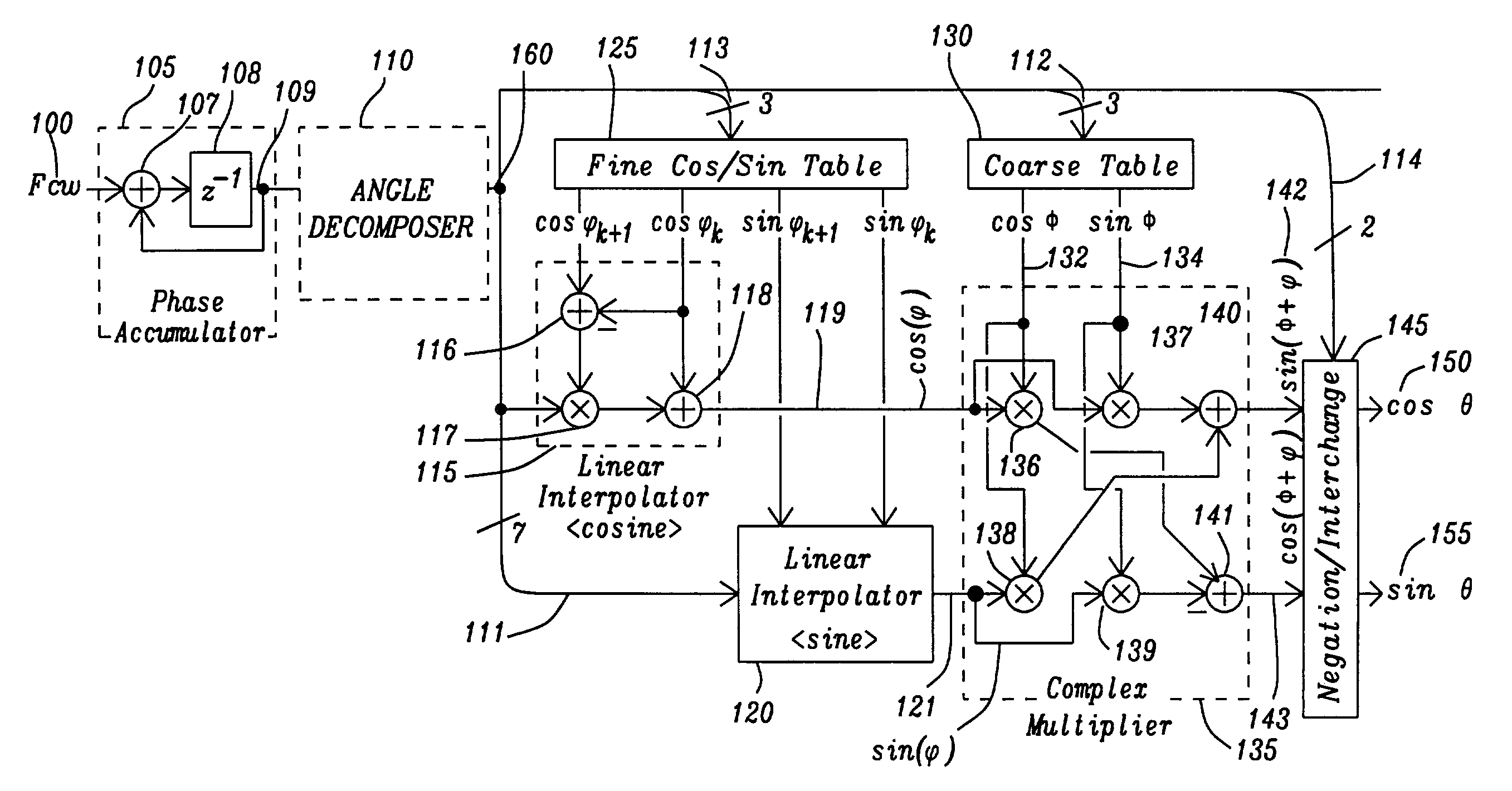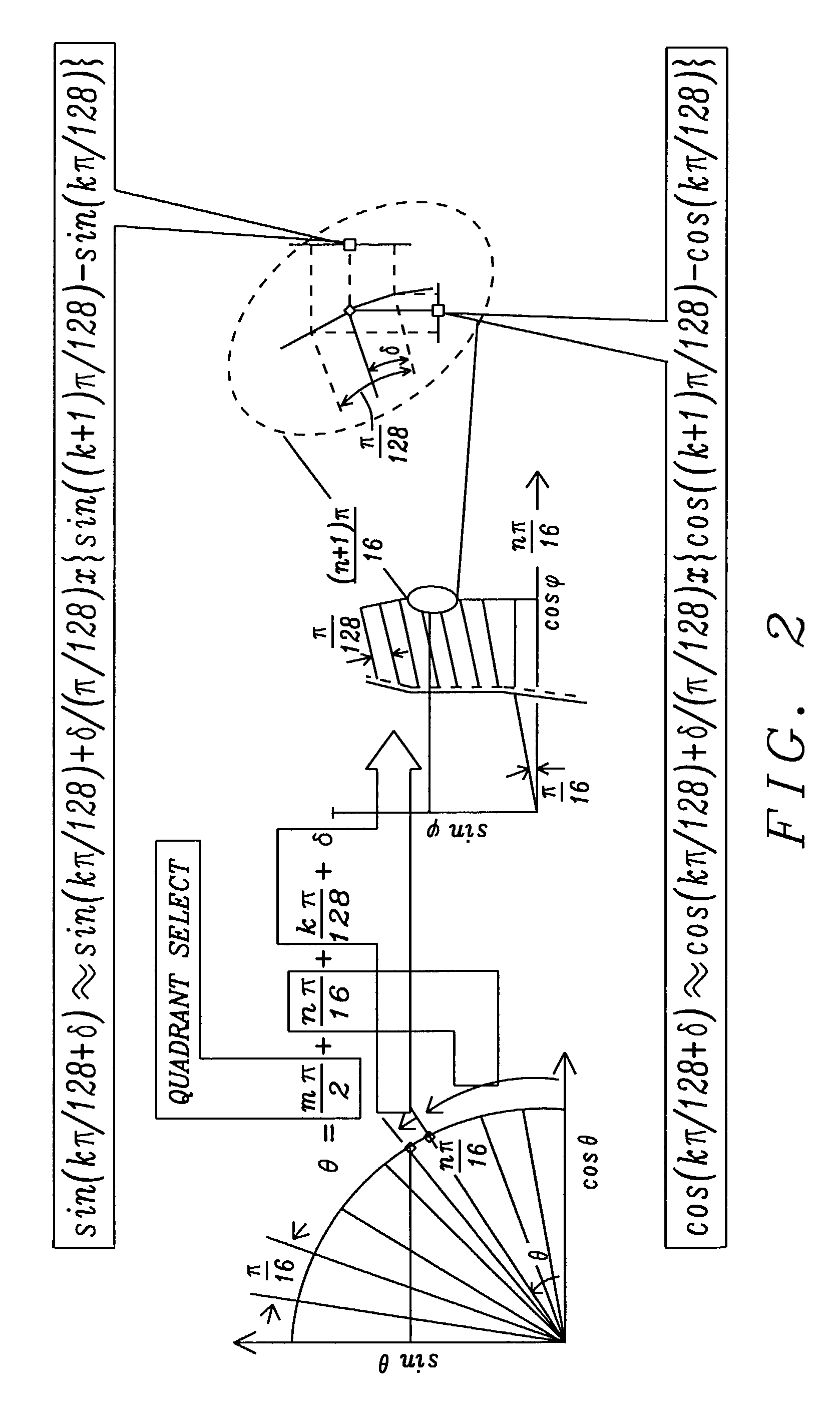16 bit quadrature direct digital frequency synthesizer using interpolative angle rotation
a direct digital frequency and quadrature technology, applied in the field of direct digital frequency synthesis methods and apparatuses, can solve the problems of lack of tuning flexibility and neither option supports high-speed output frequency hopping
- Summary
- Abstract
- Description
- Claims
- Application Information
AI Technical Summary
Benefits of technology
Problems solved by technology
Method used
Image
Examples
Embodiment Construction
[0039]The direct digital frequency synthesizer of this invention has a trigonometric function generator that upon receipt of an input signal representing a phase angle provides an output signal representing at least one trigonometric function of the phase angle. The trigonometric function generator decomposes the phase angle into multiple sub-angles. One of the sub-angles indicating the quadrant of the unit circuit 50 of FIG. 1c. A second sub-angle is a coarse increment of a quadrant of the unit circuit 50 and a third sub-angle is a fine increment of the coarse increment. The phase angle is the sum of the sub-angles and a small differential between two of the third fine increments.
[0040]The trigonometric function generator determines the trigonometric function of the sub-angle of the coarse increment and then interpolates the trigonometric function between the trigonometric function of each of the two of the fine increments larger and smaller than smallest sub-angle of the decompose...
PUM
 Login to View More
Login to View More Abstract
Description
Claims
Application Information
 Login to View More
Login to View More - R&D
- Intellectual Property
- Life Sciences
- Materials
- Tech Scout
- Unparalleled Data Quality
- Higher Quality Content
- 60% Fewer Hallucinations
Browse by: Latest US Patents, China's latest patents, Technical Efficacy Thesaurus, Application Domain, Technology Topic, Popular Technical Reports.
© 2025 PatSnap. All rights reserved.Legal|Privacy policy|Modern Slavery Act Transparency Statement|Sitemap|About US| Contact US: help@patsnap.com



